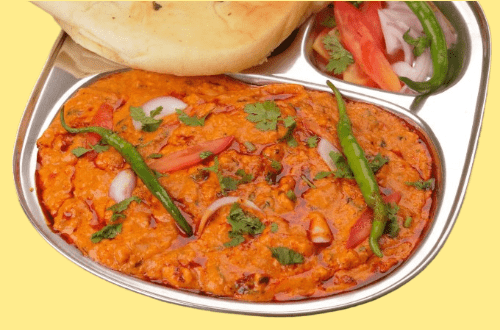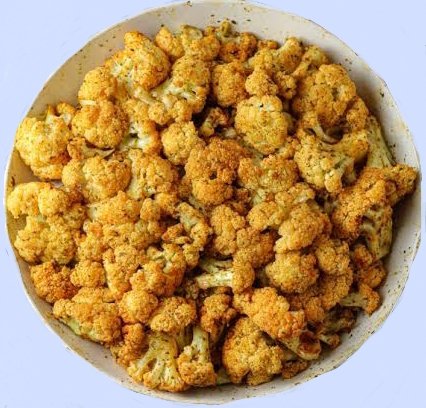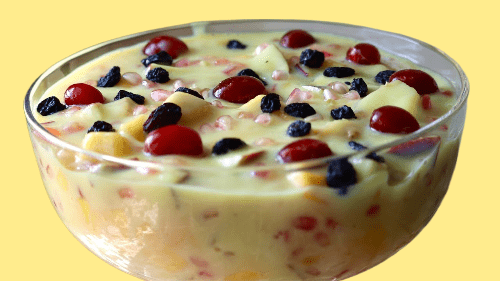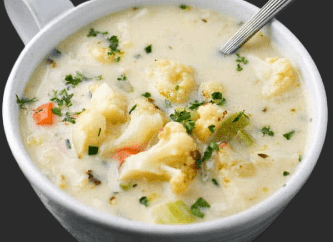Bihari Daal Ki Puri
Introduction:
Bihari Daal Ki Puri vast landscape of Indian cuisine, Bihari food often remains an undiscovered gem. While other regional cuisines from India like Punjabi, Bengali, and South Indian have gained international fame, Bihari cuisine, with its humble roots, continues to surprise those who delve into its depths. It is a cuisine shaped by local produce, age-old traditions, and a wealth of culinary techniques passed down through generations.
One such treasure from the heart of Bihar is the Daal Ki Puri, a deep-fried bread stuffed with seasoned lentils, bursting with flavor. In Bihar, this dish transcends mere food and becomes a centerpiece of celebrations, familial gatherings, and festive occasions. A staple during festivals such as Chhath Puja and weddings, Daal Ki Puri is more than a meal—it is a symbol of the state’s culinary pride and heritage.
While many regions in India are known for puris, what makes Bihari Daal Ki Puri stand out is the unique use of spiced lentils stuffed within a soft, elastic dough. The crispness of the puri combined with the spiced lentil filling creates a textural delight that Biharis have cherished for centuries.
In this blog, we embark on a journey to explore the history, cultural significance, ingredients, and step-by-step method of making Bihari Daal Ki Puri. We will also dive into variations, serving suggestions, and the importance of this dish in the larger context of Bihari culture.
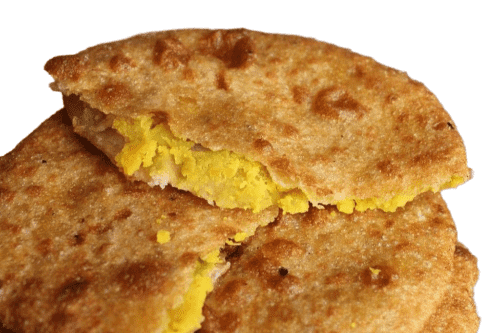
The Cultural Significance of Bihari Daal Ki Puri
Bihari Daal Ki Puri isn’t just another fried bread on the Indian table. It carries with it stories of festivity, nostalgia, and community. In many Bihari households, preparing Daal Ki Puri is a collective effort. It’s made in large batches to be shared with extended family members, neighbors, and guests, embodying the spirit of togetherness that defines Bihari culture.
The process of making Daal Ki Puri itself is often a bonding experience. Traditionally, women of the household would gather in the kitchen, laughing, chatting, and working in unison to prepare these delightful puris. In the villages, where life is slow and relationships run deep, the act of making food together is an important ritual. Children are given small balls of dough to practice rolling puris, while the elders expertly fry them in large kadhai (deep cooking pots) over open flames.
This dish is also a regular feature during Chhath Puja, one of Bihar’s most revered festivals, where it is offered to the Sun God. The puris are paired with other traditional dishes like kaddu ki sabzi (pumpkin curry) and kheer (rice pudding) in a grand spread. The beauty of Daal Ki Puri lies not just in its taste but in the memories it creates around the dining table.
The lentils used in the stuffing, particularly chana dal (split chickpeas), are a staple in Bihari homes. Lentils are a vital source of protein for vegetarians, and in Bihar’s agrarian society, lentils, along with rice and wheat, have been cultivated for centuries. The use of simple ingredients like lentils, mustard oil, and whole spices reflects the resourcefulness of Bihari cuisine—transforming basic pantry staples into something extraordinary.
The Unique Ingredients of Bihari Daal Ki Puri
The simplicity of Daal Ki Puri is what makes it extraordinary. Each ingredient plays a crucial role in building the layers of flavor that make this dish stand out. Let’s see a closer look at the key components:
- Chana Dal (Split Chickpeas): This is the heart of the dish. Chana dal is soaked and boiled to a soft consistency, then mashed and tempered with a medley of spices. Lentils are not only nutritious but also rich in fiber and protein, making them a healthy and satisfying component of the meal.
- Mustard Oil: Bihari cuisine is heavily reliant on mustard oil, which imparts a pungent, robust flavor that is characteristic of the region. When heated, mustard oil loses some of its intensity, leaving behind a nutty, earthy flavor that works beautifully with the spices in the filling.
- Ajwain (Carom Seeds): Known for its digestive properties, ajwain is often used in Bihari dishes, particularly in fried foods. It lends a slightly bitter, thyme-like flavor that balances the richness of the fried puris.
- Hing (Asafoetida): A small pinch of hing goes a long way in adding depth to the lentil mixture. It enhances the savory notes of the dal and pairs well with cumin and mustard oil.
- Wheat Flour: The puri dough is made from finely milled wheat flour. This ensures that the puris are soft and pliable, making them easy to roll out and stuff. Some recipes also include a small amount of semolina for extra crispiness.
- Spices: The spice mix is where Bihari Daal Ki Puri truly shines. Cumin seeds, coriander powder, red chili powder, turmeric, and garam masala are common additions to the filling, each adding its own layer of complexity.
These humble ingredients, when combined with care and precision, come together to create a dish that is both hearty and packed with flavor.
Step-by-Step Recipe: Crafting the Perfect Bihari Daal Ki Puri
Now that we’ve explored the cultural significance and ingredients, let’s dive into the detailed step-by-step process of making the perfect Bihari Daal Ki Puri.
Ingredients:
- 2 cups chana dal (split chickpeas)
- 3 cups wheat flour
- 2 tbsp mustard oil
- 1 tsp ajwain (carom seeds)
- ½ tsp hing (asafoetida)
- 1 tsp cumin seeds
- 1 tbsp coriander powder
- 1 tsp red chili powder
- ½ tsp turmeric powder
- 1 tsp garam masala
- Salt to taste
- Oil for frying
- Water (as needed)
Instructions Of Bihari Daal Ki Puri :
- Soak and Boil the Chana Dal: Begin by washing and soaking the chana dal for at least 2 hours. This helps the dal soften and cook evenly. After soaking, drain the water and boil the dal in fresh water until it becomes soft but not mushy. It should hold its shape but mash easily when pressed.
- Prepare the Dough: While the dal is cooking, make the dough for the puris. In a large bowl, sift the wheat flour and add a pinch of salt. Add a tablespoon of mustard oil and ajwain to the flour. Gradually add water and knead the dough until it becomes soft and elastic. Cover the dough with a moist cloth and let it rest for 20-30 minutes.
- Make the Dal Filling: Once the dal is cooked, drain any excess water and mash the dal coarsely. Warm 2 tablespoons of mustard oil in a pan over medium heat. Add cumin seeds, hing, and ajwain to the hot oil, and let them crackle. Add the mashed dal to the pan, followed by coriander powder, red chili powder, turmeric, and salt. Cook the dal mixture on low heat, stirring frequently until the spices are well combined and the filling dries out. Include garam masala at the end and blend well. Set aside the dal filling to cool.
- Stuff the Puris: Divide the rested dough into small, equal-sized balls. Flatten each ball slightly and place a spoonful of the dal filling in the center. Carefully overlap the edges of the mixture over the filling, fixing it totally. Gently roll the stuffed ball into a small, flat disc, being careful not to tear the dough.
- Fry the Puris: Heat oil in a deep frying pan over medium-high heat. Once the oil is hot, gently slide the puris into the oil one at a time. Fry until they puff up and turn golden brown on both sides. Remove the puris and drain them on paper towels to remove any excess oil.
Tips and Techniques for Mastering Bihari Daal Ki Puri:
While the recipe is straightforward, a few tips and techniques can ensure your Daal Ki Puris turn out perfect every time:
- Mustard Oil: If you’re not used to cooking with mustard oil, it’s essential to heat it until it reaches its smoking point before using it. This reduces its pungency and brings out its nutty flavor.
- Filling Consistency: Make sure the dal filling is dry enough to handle but not so dry that it crumbles. If the filling is too moist, it can cause the puris to break while rolling.
- Kneading the Dough: The dough should be soft but firm enough to hold the filling. Too soft, and the puris won’t hold their shape; too hard, and they’ll be difficult to roll out.
- Frying Temperature: Keep the oil at a consistent medium-high heat. If the oil is too hot, the puris will brown too quickly and remain raw inside. If the oil is too cool, the puris will absorb excess oil and become greasy.
Modern Twists and Variations Of Bihari Daal Ki Puri :
While Bihari Daal Ki Puri is traditionally made with chana dal, there are plenty of modern twists and variations you can try:
- Healthier Versions: For those looking to avoid deep frying, try baking the puris. Brush the rolled puris with oil and bake them in a preheated oven at 180°C (350°F) until golden brown.
- Gluten-Free: You can swap the wheat flour with a gluten-free flour blend or use besan (chickpea flour) for a gluten-free option. The texture will differ slightly, but the puris will still be delicious.
- Spicy Paneer Filling: For a richer variation, replace the dal filling with spiced paneer (Indian cottage cheese). Grate the paneer and mix it with spices like cumin, chili, and coriander before stuffing it into the puris.
- Cheese-Stuffed Puris: For a fusion twist, try adding grated cheese to the dal filling for a gooey, indulgent bite.
Serving Suggestions: Traditional and Modern Pairings
Bihari Daal Ki Puri is traditionally served with a variety of accompaniments, making it a wholesome and satisfying meal.
- Aloo Sabzi (Potato Curry): A classic pairing for Daal Ki Puri is a simple, spiced potato curry, which provides a soft, mildly spiced contrast to the crispy puris.
- Pickles and Chutneys: Bihari meals are incomplete without tangy achar (pickles) and fresh green chutney made from coriander and mint. The tartness cuts through the richness of the puris.
- Curd (Yogurt): A side of chilled curd can balance the warmth of the spices in the puris, adding a cooling element to the meal.
- Kaddu Ki Sabzi (Pumpkin Curry): In Bihar, this sweet and spicy pumpkin curry is often served with puris during festivals. Its mildly sweet flavor pairs wonderfully with the spicy dal-stuffed puris.
- For a modern twist, you can serve the puris with contemporary dips like hummus or spicy sriracha mayo, creating an exciting fusion of flavors.
Read More: Cooker Chicken Tikka Masala
Conclusion and Final Thoughts
- Bihari Daal Ki Puri is more than just a dish; it’s a celebration of Bihari culture, traditions, and the art of creating something delicious from humble ingredients. In a world where food trends come and go, this dish remains a timeless reminder of the beauty of simple, home-cooked meals.
- By making Daal Ki Puri, you’re not only indulging in a flavorful meal but also participating in a rich cultural heritage. Whether you stick to the traditional recipe or experiment with modern twists, this dish is sure to bring joy to your table.
- So, gather your ingredients, call your loved ones into the kitchen, and create a meal that’s more than just food—it’s a shared experience, a connection to the past, and a celebration of the present.
Recipe Card:
Ingredients:
- 2 cups chana dal (split chickpeas)
- 3 cups wheat flour
- 2 tbsp mustard oil
- 1 tsp ajwain (carom seeds)
- ½ tsp hing (asafoetida)
- 1 tsp cumin seeds
- 1 tbsp coriander powder
- 1 tsp red chili powder
- ½ tsp turmeric powder
- 1 tsp garam masala
- Salt to taste
- Oil for frying
- Water (as needed)
Instructions:
- Soak and boil the chana dal.
- Prepare the puri dough by kneading wheat flour, ajwain, mustard oil, and water.
- Mash the cooked dal and temper it with spices.
- Stuff the puris with the dal mixture and roll them into discs.
- Fry in hot oil until golden brown and serve with your favorite accompaniments.
- This blog recipe combines cultural storytelling, a detailed recipe, and modern variations, making it both informative and engaging for a diverse readership.
